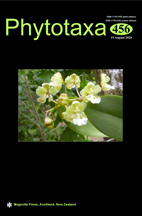Abstract
Two new rupicolous species of Pinguicula are described from the limestone and dolomitic mountain ranges of central and southern Iberian Peninsula, which were previously identified as P. submediterranea, P. mundi or P. dertosensis. First, the name P. tejedensis sp. nov. is applied to populations concealed to the high elevation areas of Sierra de Tejeda and Sierra de Almijara, in Granada Province (Andalusia, southern Iberian Peninsula). They resemble P. submediterranea, a name here revived for the Subbetic populations of Jaen Province, but its floral features, fruits and seeds allow easy differentiation. Second, P. casperiana is proposed to name populations occurring in the medium to high elevation areas of Serranía de Cuenca, between Cuenca and Guadalajara Provinces (Castilla-La Mancha, central-eastern Iberian Peninsula). Members of the Castillian species are closer to P. dertosensis and also akin to P. mundi, but again their floral features, fruits and seeds allow safe recognition. Both species are significantly different to each other and with regard to their morphologically close relatives, and they also show molecular divergences that support recognition at species rank. Data on morphological traits, ecology, distribution, biogeography and phylogenetic relationships are also presented.

